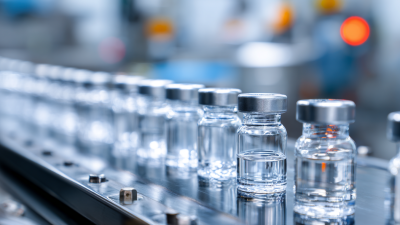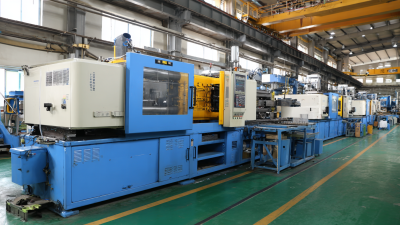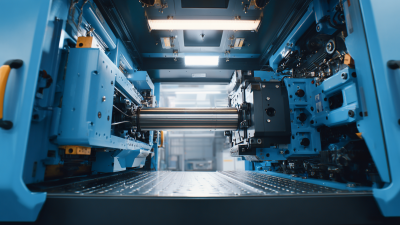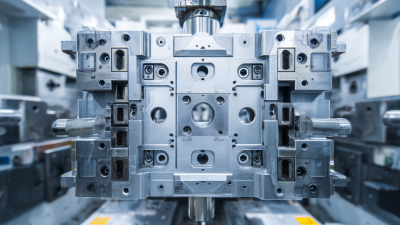
In the competitive landscape of manufacturing, optimizing plastic injection molding machines has become crucial for enhancing production efficiency and reducing costs. According to a 2023 industry report by Grand View Research, the global plastic injection molding market is projected to reach over $500 billion by 2028, driven by the increasing demand for efficient and precise manufacturing processes. As companies strive to boost their production capabilities, understanding and implementing essential optimization techniques for plastic injection molding machines is more important than ever. By focusing on maintenance, process parameters, and innovative technologies, manufacturers can significantly improve throughput and product quality while minimizing waste and downtime. This blog highlights seven essential tips to help businesses harness the full potential of their plastic injection molding machines, ultimately leading to better production outcomes in today's fast-paced market.

Understanding the key parameters that affect injection molding efficiency is crucial for maximizing production output while maintaining quality. One of the most significant factors to consider is the
mold temperature. Maintaining optimal temperatures ensures that the plastic material flows properly and fills the mold without defects.
A higher mold temperature can enhance the flow of certain thermoplastics, reducing the chances of short shots and surface imperfections.
Another critical parameter is injection speed. The speed at which the plastic is injected into the mold impacts how well the material fills the cavity. If the injection speed is too slow, it can lead to incomplete filling, whereas a speed that is too fast may cause jetting or other flow issues.
Furthermore, adjusting the hold pressure is essential for preventing sink marks and ensuring that the product maintains its desired dimensions. By paying close attention to these parameters and regularly calibrating the machines, manufacturers can achieve
higher efficiency and better overall production quality.
Regular maintenance is crucial for ensuring the efficiency and longevity of injection molding machines. By committing to a proactive maintenance schedule, manufacturers can significantly reduce downtime and production setbacks. Regular checks of critical machine components like the screw and barrel, hydraulic systems, and temperature controls help in identifying potential issues before they escalate into costly repairs.
One essential tip for optimizing injection molding machines is to create a comprehensive maintenance checklist. This should include routine inspections and functions such as lubricating moving parts, checking for wear and tear, and calibrating instruments. Additionally, maintaining a clean working environment around the machinery can prevent contaminants from affecting the production process.
Another beneficial practice is to train your staff on the importance of proper machine operation and routine maintenance. Well-informed operators are more likely to spot irregularities and perform necessary adjustments. By empowering your team with knowledge about the machines, you ensure that your production runs smoothly and efficiently, ultimately leading to enhanced output and quality.
 Advanced technologies are revolutionizing the plastic injection molding industry, providing manufacturers with tools to enhance performance and efficiency. One significant advancement is the integration of artificial intelligence (AI) and machine learning algorithms into injection molding machines. These technologies enable predictive maintenance, allowing for real-time monitoring of equipment conditions. By analyzing data patterns, manufacturers can anticipate potential failures before they occur, reducing downtime and saving costs associated with unplanned maintenance.
Advanced technologies are revolutionizing the plastic injection molding industry, providing manufacturers with tools to enhance performance and efficiency. One significant advancement is the integration of artificial intelligence (AI) and machine learning algorithms into injection molding machines. These technologies enable predictive maintenance, allowing for real-time monitoring of equipment conditions. By analyzing data patterns, manufacturers can anticipate potential failures before they occur, reducing downtime and saving costs associated with unplanned maintenance.
Another critical area for optimization is the use of automation and robotics in the injection molding process. Automated systems ensure precision and consistency in production, minimizing human error and increasing overall productivity. Collaborative robots, or cobots, can work alongside human operators, handling repetitive tasks while freeing up personnel for more complex activities. The implementation of automation not only speeds up production times but also enhances product quality, making the entire manufacturing process more efficient and profitable. By embracing these advanced technologies, manufacturers can achieve a competitive edge in the ever-evolving landscape of plastic injection molding.
Optimizing cycle times in plastic injection molding is critical for boosting production output and enhancing overall efficiency. According to a report from the Society of Plastics Engineers, reducing cycle times by just 10% can lead to a potential increase in production output of up to 25%. This improvement can be achieved through several strategies, such as fine-tuning machine settings and optimizing mold designs. For instance, ensuring proper cooling channel design can significantly reduce cooling time, which is a substantial part of the cycle.
Another method to enhance cycle times involves the integration of advanced automation technologies. A study by the Plastic Industry Association highlights that automating processes like part ejection and material handling can reduce labor costs by 20% while simultaneously cutting down on cycle times. Additionally, regular maintenance and using high-quality machine components ensure consistent performance and reduce downtime, contributing to a more stable production flow. Implementing these strategies not only optimizes machine performance but also fosters a more profitable manufacturing environment.
This chart illustrates the relationship between the cycle time optimization strategies and their impact on production output, showcasing how various methods can significantly enhance the efficiency of plastic injection molding machines.
To maximize the effectiveness of plastic injection molding machines, investing in staff training is crucial. Employees who are well-versed in best practices can significantly enhance machine utilization and production output. Training should encompass the entire operation process, including setup, operation, maintenance, and troubleshooting. By providing hands-on workshops and interactive learning sessions, workers can familiarize themselves with the equipment's operational nuances, leading to faster response times and better efficiency.
Furthermore, fostering a culture of continuous learning ensures that staff stays updated on the latest techniques and technologies in the industry. Regular training sessions can cover new materials, software upgrades, and innovative molding methods. Encouraging teamwork and knowledge sharing among employees can also lead to the development of collective problem-solving approaches, ultimately enhancing machine performance. An informed workforce is not only a boon for productivity but also helps in the early identification of potential issues, reducing downtime and maintenance costs.







Copyright © 2025 The Toolroom Inc. All Rights Reserved.
Website Design St Louis by IQComputing